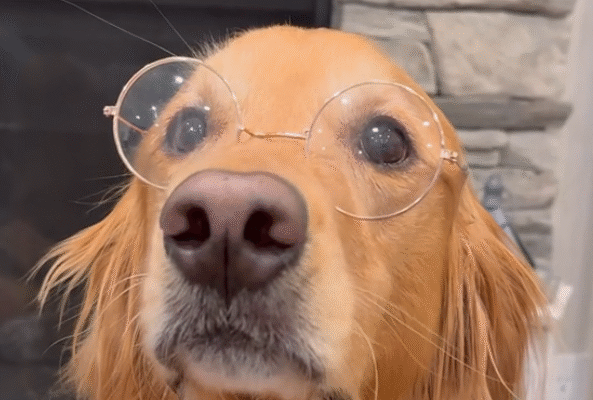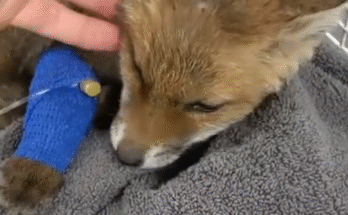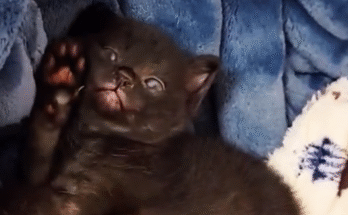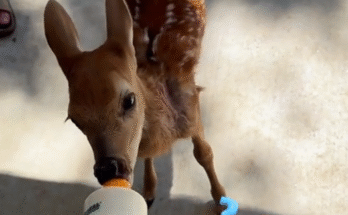If you’ve ever thought dogs were just good for walks, snuggles, and eating half your sandwich when you’re not looking—well, think again. This is the story of how one fluffy golden retriever named Teddy helped a bright and curious little girl named Ruby learn how to spell.
Ruby was six years old, with pigtails that bounced when she ran and a pair of glasses always sliding down her nose. She was a dreamer—imaginative, sweet, and curious—but when it came to spelling, she struggled. Letters would jumble themselves in her head. She could tell the most fantastic stories aloud, but putting those same words on paper? That was a different story.

Enter Teddy.
Teddy was more than a dog—he was Ruby’s best friend. A three-year-old golden retriever with a golden heart, Teddy had been with the family since Ruby was just a toddler. He had soft, soulful eyes and the uncanny ability to sense Ruby’s emotions better than anyone. When she was happy, Teddy would zoom around the backyard with his tail spinning like a helicopter blade. When she was sad, he’d nudge her hand gently and rest his big head in her lap.
Ruby’s parents had tried many things to help her with spelling—flashcards, games, writing drills—but nothing seemed to stick. That was until one rainy afternoon in March when Ruby and Teddy invented their own kind of learning.
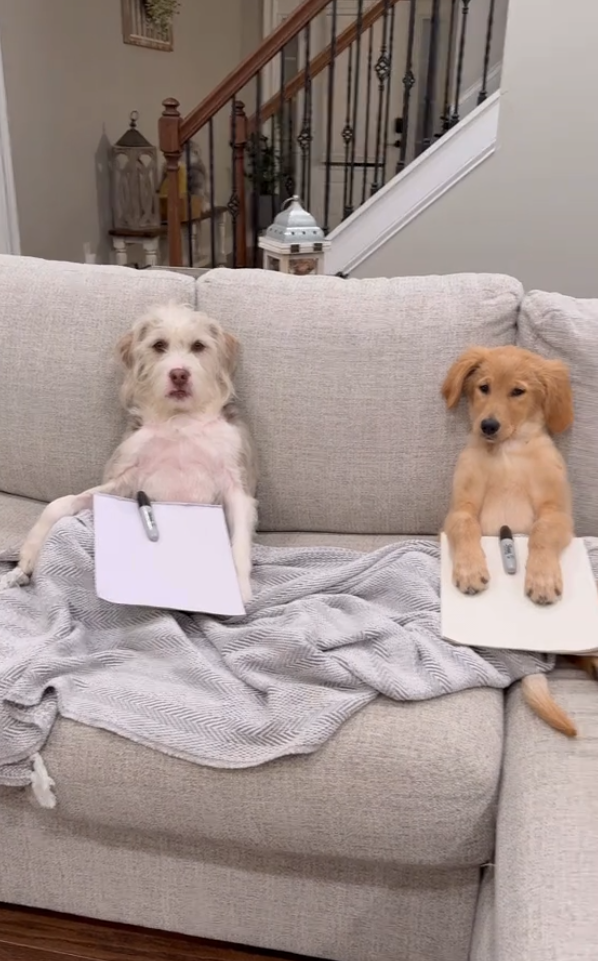
Ruby had been practicing spelling the word “friend,” which her teacher Ms. Wilson had said was the week’s challenge word. She had written it wrong twice already—freind, frend. Frustrated, she threw her pencil down and let out a sigh.
Teddy, who had been napping nearby, perked up his ears. He stood, stretched, and padded over to Ruby. Without a word (as dogs do), he nudged the pencil back toward her with his nose.
Ruby blinked. “You think I should try again?” she asked, half-laughing.
Teddy barked once—short and sharp.
Ruby giggled. “Okay, fine. But you help me, deal?”
And that’s how it began. The next time she tried to spell “friend,” she broke the word into pieces, saying it aloud as she did. “F… R… I…”
Teddy wagged his tail when she got it right. Ruby grinned.
“…E… N…”
Another happy bark.
“…D.”
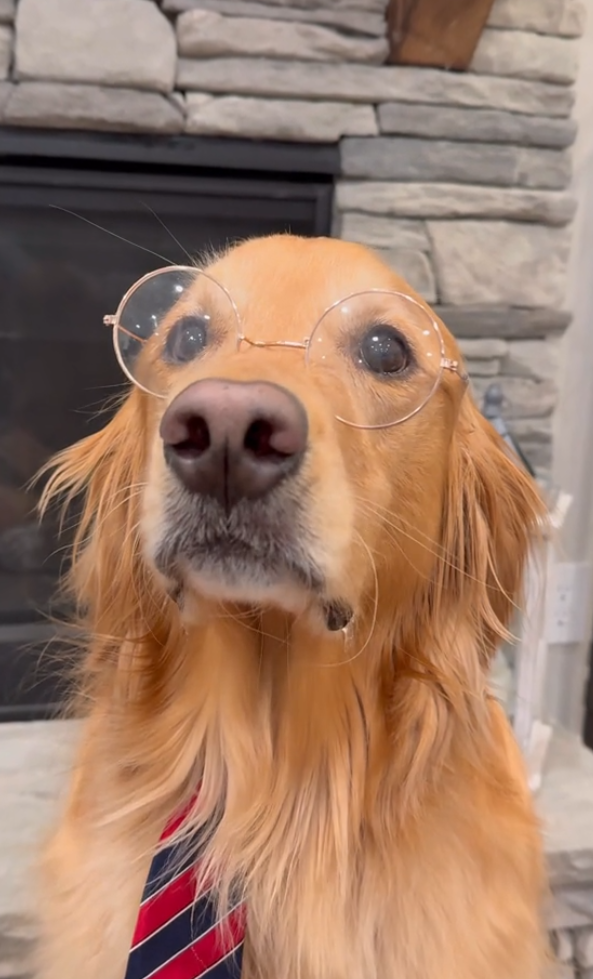
Teddy did a full circle spin and licked her face.
From that moment on, Teddy was her spelling coach. The rules were simple: Ruby would spell aloud, and Teddy would “judge” her answers. One bark meant “try again,” two tail wags meant “got it!” If she nailed a tough word, Teddy would do a celebratory paw-shake or spin.
Ruby loved the game. And what started as just “practice” turned into a joyful daily ritual.
They’d sit on the living room floor with a pile of words Ruby’s teacher had sent home. Ruby would look Teddy in the eyes like he was her furry teacher and say, “Okay, Teddy. Today’s word is… adventure.”
“Ready?”
Teddy would lift his head, his ears perked and alert.
“A… D…”
Teddy blinked once.
“V… E…”
Tail wag.
“N… T…”
Another tail wag.
“U… R… E!”

And right on cue, Teddy would leap into the air, land with a “whuff!” and roll over dramatically, which always sent Ruby into fits of laughter.
The change in Ruby’s spelling was incredible. Her parents, teachers, even the principal noticed it. Her confidence soared. But most of all, she was happy. Spelling no longer felt like a punishment—it was a game, a shared adventure between a little girl and her dog.
One day, Ruby’s mom filmed a short clip of one of their spelling sessions. Ruby, sitting cross-legged in her pajamas, asked Teddy how to spell “banana.” Teddy gave his usual encouragement through wags and goofy grins. The clip was adorable. She posted it on her social media with the caption:
“Teddy taught @Ruby how to spell! #dog #goldenretriever #homeschoolhero”
The internet exploded. Within hours, the video had thousands of likes. Comments poured in:
- “I didn’t know I needed this today 😭😭”
- “This golden retriever deserves a teaching degree!”
- “This is the purest thing I’ve seen all year!”
People from all over the world started following Ruby’s journey. Parents began trying “Teddy Training” methods with their own kids and pets. A group of teachers reached out to Ruby’s parents to ask if they could share the video with their students.
Before long, “Teddy Tuesdays” became a weekly online tradition. Every Tuesday, Ruby and Teddy would post a new video, spelling a new word and sharing tips. Ruby loved preparing for them—choosing the words, drawing pictures, and even giving Teddy little bowties to wear.
Sometimes Teddy got a bit too excited and knocked over the camera. Other times he’d forget what he was supposed to do and just lay down for a belly rub instead. But no one minded—he was, after all, just a very good boy.
One Tuesday, Ruby chose the word “kindness.” She spelled it perfectly. At the end of the video, she looked into the camera and said:
“Spelling is easier when someone believes in you. Teddy believes in me—and I believe in you!”
That clip went viral too. Kindness challenges sprang up. Kids shared videos of their dogs, cats, even stuffed animals helping them spell. It became a movement—one golden dog and one determined girl reminding the world that learning can be full of laughter, love, and tail wags.
Years from now, people might forget the exact spelling of “friend” or “banana,” but they’ll remember the little girl with glasses and the golden retriever who helped her believe in herself.
Because sometimes, the best teachers don’t use chalkboards or red pens. Sometimes, the best teachers have fur, four paws, and a heart full of love.
And their classroom? Well, that’s anywhere they’re needed.
